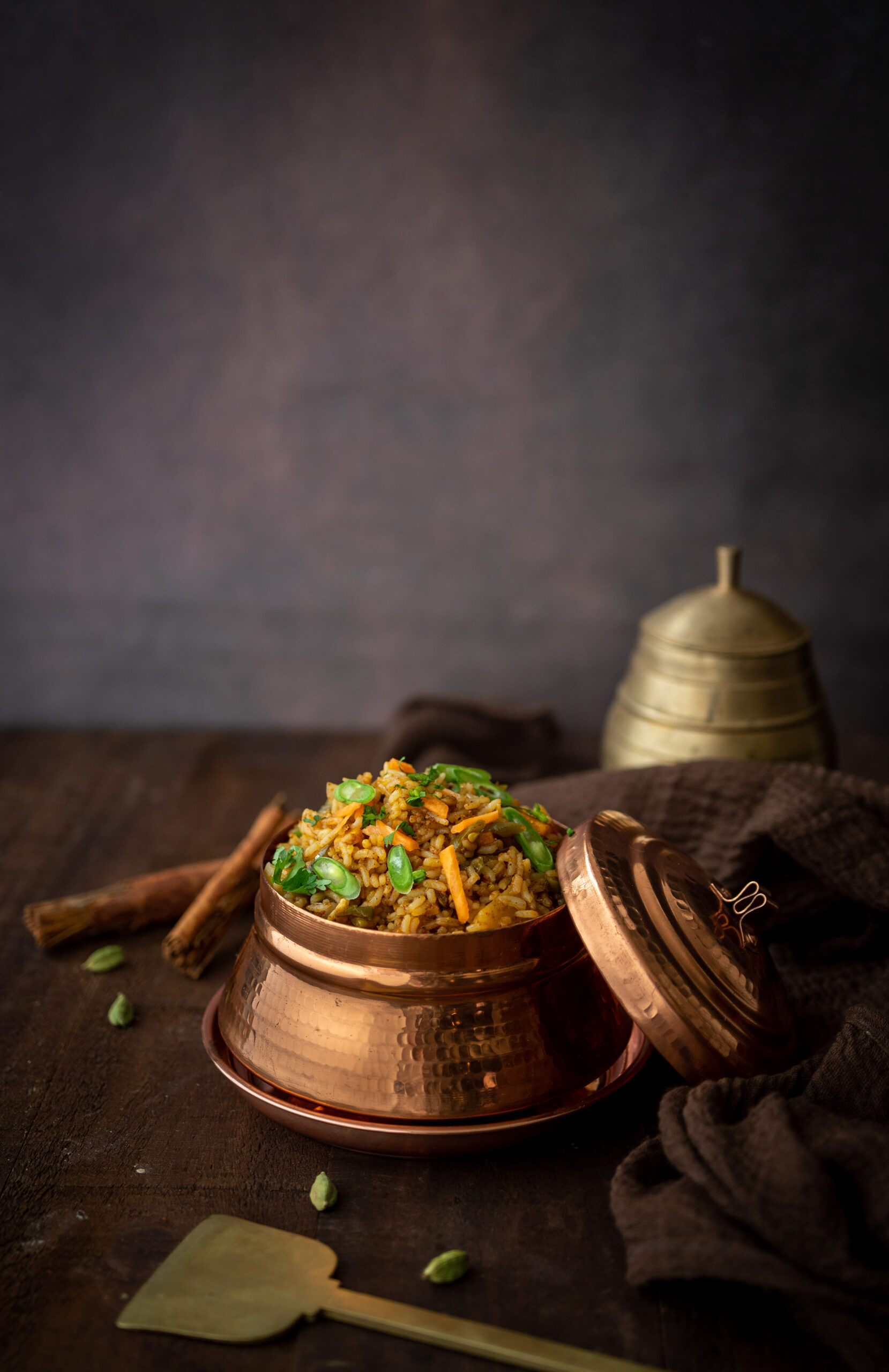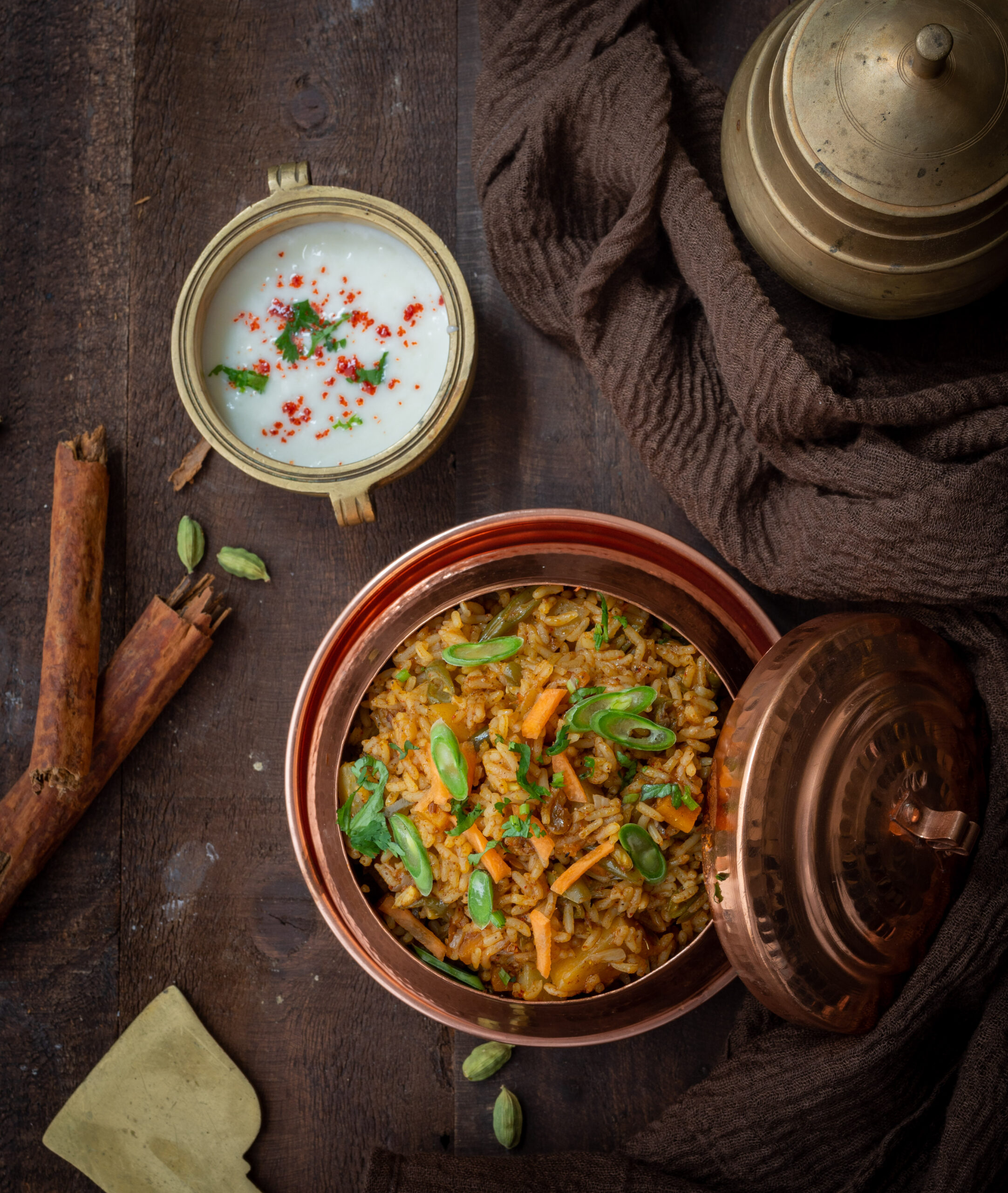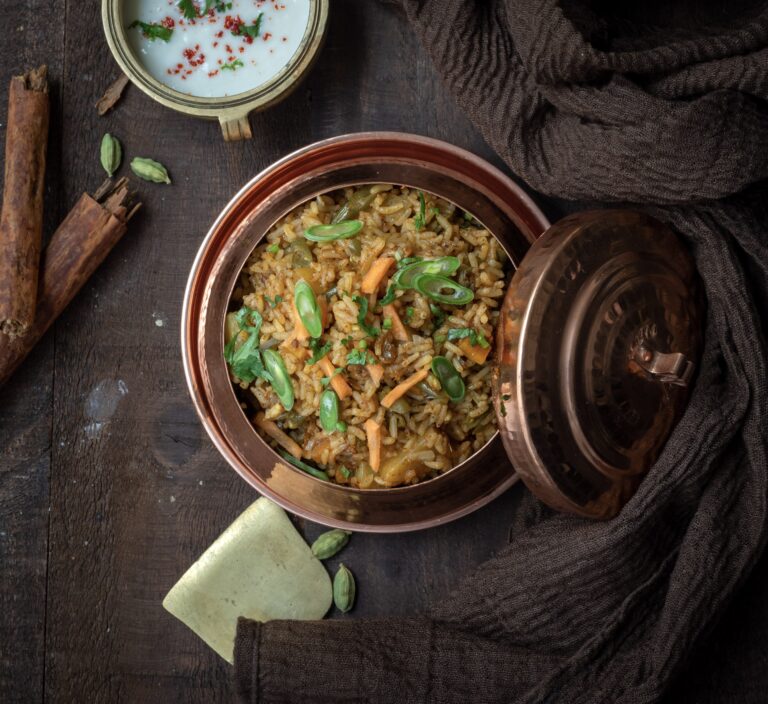When my children were growing up, they were really fond of biryani. Biryani is a speciality in India. It is basically a type of rice, loaded with flavours, aromas and vegetables and/or meat. The specific ingredients included will be based on what is locally available, as well as preferences unique to a community – and it is made by many different communities, each in their own styles. By and large, the authentic method of preparing a fragrant biryani loaded with spices came with the Mughals, and trickled into other cuisines. The dish may even have other names in some parts of the country. We are fluid here when it comes to biryani, and it is very much a pan-Indian dish or dish category. A real biryani takes time, effort and skill – but I’ve perfected the recipe for an easy biryani that tastes very good, smells just as lovely and requires the above three elements only minimally!
So here’s the truth: I never really did know how to make biryani when the kids were younger. So I always resorted to this easy and quick method. I feel that this is essentially a masala rice in preparation, but it comes close in flavour and scent to authentic biryani.
However, as my children grew and started eating around the world, they got smarter and were quick to spot when my masala rice was being passed off as a biryani. So I in turn learned how to make real biryani too. That, however, is a long process. The traditional method varies both in its ingredients as well as its cooking. Today, I have opted to share a simple method for an easy biryani instead. While I have kept it vegetarian, you can add meat at the same time in the method that I add the veggies. All else remains the same in the recipe.
When I began to share recipes on this blog some years ago, one of the essential ideas that went behind its conception was that it should appeal to young adults. Whether they were off at university, or were newly-wed and starting a family of their own, I wanted to offer recipes that they could pull off with ease. So I like to present dishes that require accessible ingredients, and simple methods. While I do enjoy sharing exotic or more complex fare here too, and I quite often throw in traditional recipes that keep my readers connected to their roots, I do keep adaptability and time-efficiency in mind most of the time. I know this particular easy biryani recipe fits the criteria because it’s the version that I myself still keep making when I visit my kids in other locations, and encourage them to cook when they’re on their own too.
So, now that I’ve shared one of the core motivations behind how I come up with my recipes, let me also say: I hope this blog has served many. Feel free to leave comments on what else you’d like to see here or what you would like to know about the culinary realm, especially if you’ve just started your journey in the kitchen.

Easy Biryani
(Yield: Serves 2)
2 tablespoons ghee
1 bay leaf
2 cloves
1 teaspoon cumin seeds
1 cardamom
2-3 garlic cloves
½ cup chopped onions
2 cups chopped vegetables (beans, carrot, peas, potato)
1 tablespoon tomato purée
1½ cups water
1 cup rice
Salt to taste
2 teaspoons garam masala
2 teaspoons dhaniya/jeera powder
¼ teaspoon turmeric
Coriander and mint leaves (to garnish)
Rinse and pick the rice and set it aside.
Heat the ghee in a saucepan or pressure cooker. To this, add the bay leaf, cumin, cloves and cardamom. Once they have heated, add the garlic and sauté for a few seconds. Then, add the onions and the remaining vegetables. If you are using meat, add it now as well. Sauté on a medium or high flame.
Now, add the tomato purée. Stir for a few minutes.
Then, add the rice and the water. Add the remaining masala and close the lid of the pressure cooker or cover the saucepan. Allow to cook for no more than 2 whistles or until the rice is tender to the touch, but not too soft. Turn off the flame.
Once it has cooled, open the lid. Sprinkle with coriander leaves and mint leaves. Cover again for some time.
Serve while still hot. Biryani is usually accompanied with raita. Here is a fancier version of this curd side dish, if you’d like to try it out.
I hope you’ll enjoy this delicious, fragrant and flavourful biryani, and I also hope that you find it very easy to make!




